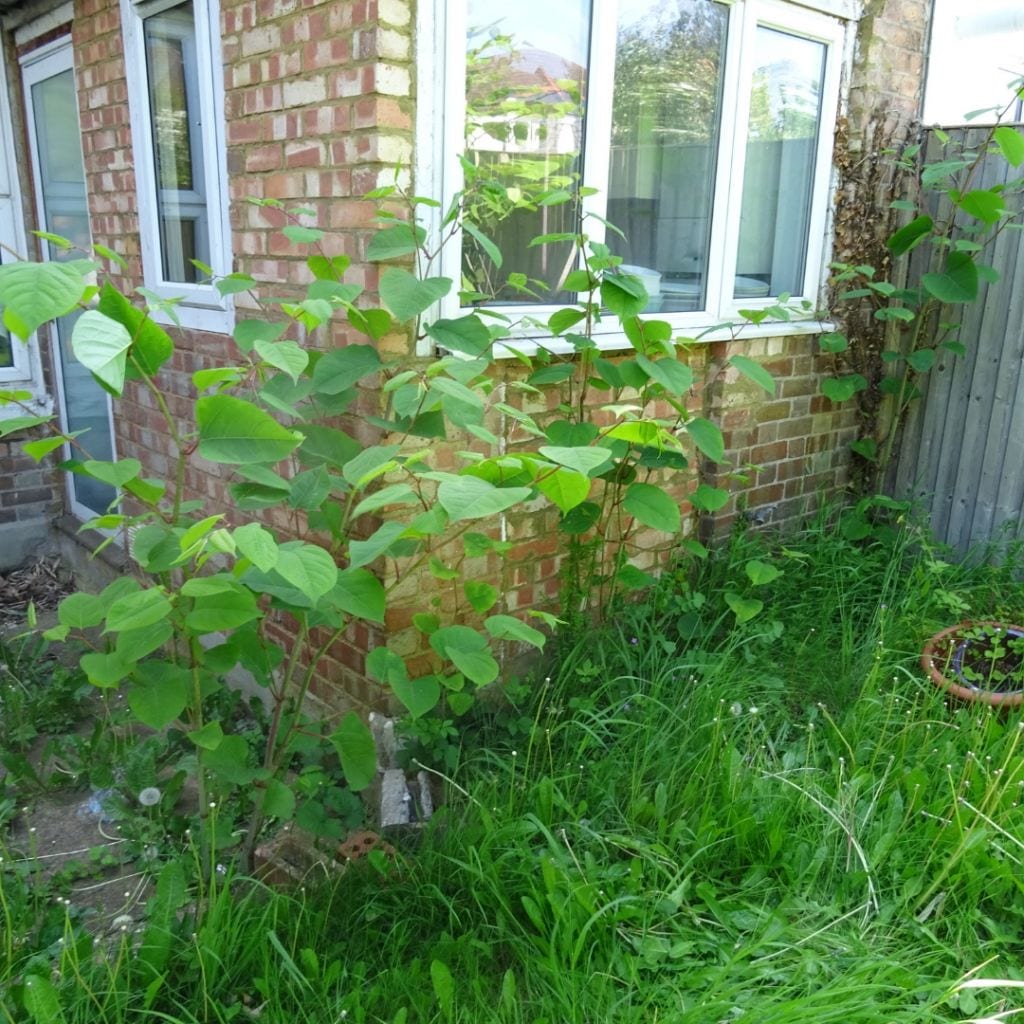
You might have heard horror stories about Japanese knotweed causing severe damage to properties across the UK, making selling them rather difficult. No wonder Japanese knotweed infestations have caused mortgage lenders to take a cautious approach when it comes to dealing with properties that are affected by this pesky plant.
Before understanding the extent to which Japanese knotweed affects mortgages and the extra measures to take before obtaining a mortgage with this invasive plant, let’s check out what it is and how it is a problem.
What is Japanese knotweed?
Japanese knotweed is a tall herbaceous perennial plant with big shovel-shaped green leaves, white flowers, and bamboo-looking stems. As it grows really fast in almost all types of soil, it quickly spreads while growing from the underground roots (also known as rhizomes). It is extremely difficult to get rid of these rhizomes as a new plant may quickly sprout from even a tiny fragment that’s left in the soil.
How does it affect your chances of getting a mortgage?
Japanese knotweed spreads so fast that it can overtake the garden on a property in no time, ruining them completely by strangling all other plants. The roots of this dangerous plant block the drains which can even damage the foundation if left untreated. As all this damage caused by knotweed is likely to affect a property’s value, getting a mortgage with it isn’t easy. The worst is when you think you have successfully killed it off; it may be laying dormant ready to sprout again.
Knotweed has been singled out by the government and also the Royal Institution of Chartered Surveyors as an invasive plant, which if allowed to grow unchallenged, may increase pre-existing structural damage to properties, and disrupt paving and tarmac surfaces.
How do mortgage lenders access Japanese knotweed’s risk?
Most mortgage lenders access the risk of knotweed based on the four categories listed below:
– The plant is on a neighbouring property which is over seven metres away from the actual property’s boundary.
– The plant is on a neighbouring property within seven metres of the actual property’s boundary.
– The plant is within a property’s boundary but is over seven metres away from a residential property.
– The plant is within seven metres of a property and causes serious damage to the outbuildings, boundary walls, paths, and drains. This will need immediate treatment from an expert.
How can you get a mortgage with Japanese knotweed?
Lately, many lenders across the UK have relaxed their policies concerning Japanese knotweed, though you may still find some who refuse to lend unless you prove that the infestation has been professionally treated. So, your first step to obtaining a mortgage with Japanese knotweed is to have a knotweed treatment plan in place.
In order to evaluate the property, lenders want a survey to be conducted that allows them to find out the extent to which the plant can damage your property, along with other potential risks. Depending on how severe the infestation is, the lender could charge you a higher rate of interest to compensate for the perceived threat to the plant. You may also be asked to make a higher deposit for the mortgage. So, be prepared for what’s ahead.
Thank you for reading our blog. If you are looking to get a mortgage with this invasive knotweed, make sure to get in touch with us at CYB Environmental. As experts, our management plan and 10-year insurance-backed guarantee will ensure that lenders reverse their initial refusal to lend. Call us on 020 3005 8755 or fill out our contact form today!

